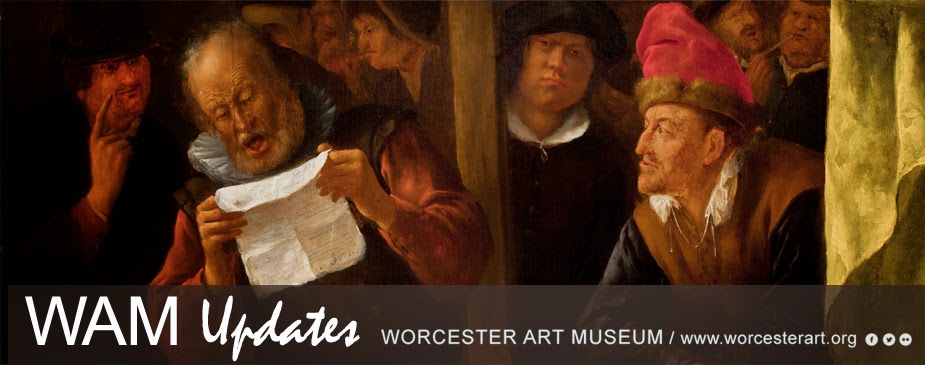Two magnificent objects created for the Chinese imperial court have recently been installed in the Chinese Decorative Arts Gallery—a Ming dynasty 16th-century wucai porcelain dish depicting a garden scene and a Qing dynasty 18th-century cloisonné enamel incense burner. The two objects represent new possibilities for polychrome decoration with the use of enamels, or colored powdered glass.
 Wucai literally means “five colors” and was an innovation in polychrome decoration for porcelains developed in early 16th-century China. While the number of colors is not strictly limited to five, the wucai palette always includes an intense cobalt blue applied under the clear glaze combined with vivid overglaze enamels, or colored powdered glass fused onto the glazed surface. These enamels commonly were red, green, turquoise, and yellow.
Wucai literally means “five colors” and was an innovation in polychrome decoration for porcelains developed in early 16th-century China. While the number of colors is not strictly limited to five, the wucai palette always includes an intense cobalt blue applied under the clear glaze combined with vivid overglaze enamels, or colored powdered glass fused onto the glazed surface. These enamels commonly were red, green, turquoise, and yellow. Cloisonné enamel is a method of polychrome decoration for metal wares popular during the Qing dynasty. Wires of bronze or copper are bent and attached to follow the outlines of a decorative design drawn onto the metal body of a vessel, such as the bronze incense burner here. Powdered glass of various colors are applied to fill the decorative design and then fired to melt and fuse them to the body of the vessel, followed by grounding and polishing the surface to create a smooth finish. Colorful and sumptuous, cloisonné enameled objects were primarily intended for decorative and household items in palaces and temples.
- Vivian Li, Assistant Curator of Asian Art
Images:
Dish with Design of Pheasant, Garden Rock, Peonies and Peach Boughs
Wanli period (1573-1620) of the Ming dynasty (1368-1644)
Six character (regular script) blue mark:
Da Ming Wanli nian zhi (“Made in the Wanli reign of the great Ming dynasty”)
Jingdezhen, Jiangxi province
Porcelain with wucai painted underglaze cobalt blue and colored enamels over transparent glaze
Private Collection
Censer
Chinese
Qianlong Period; dated 1736–1795
Cloisonné enamel with gilt bronze
Private Collection










